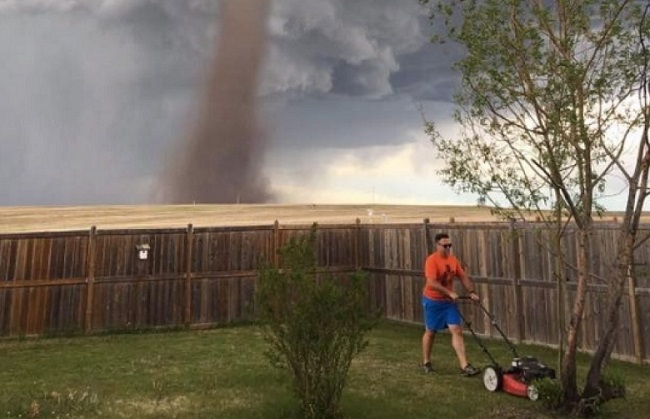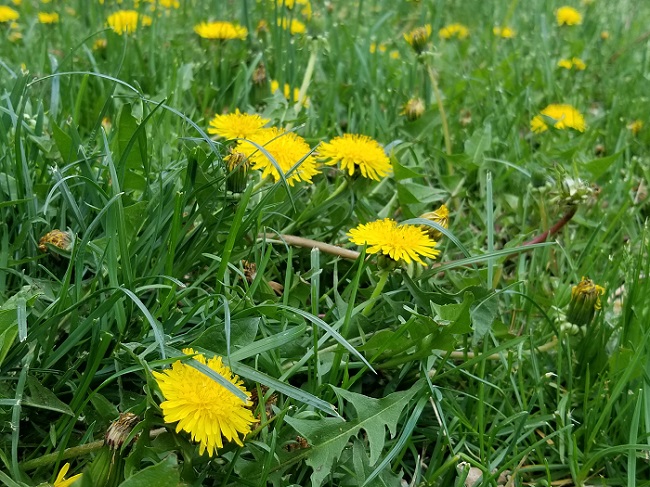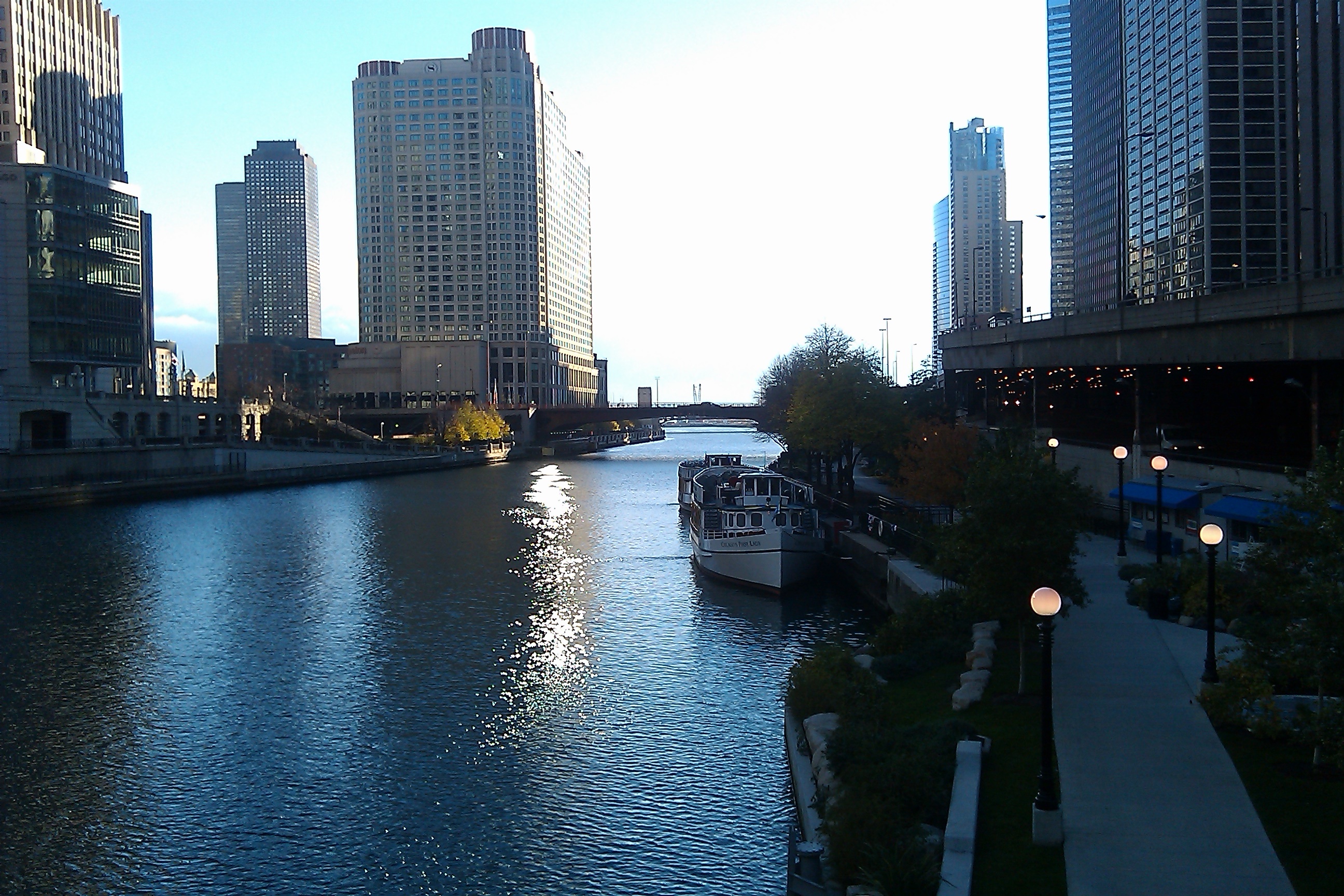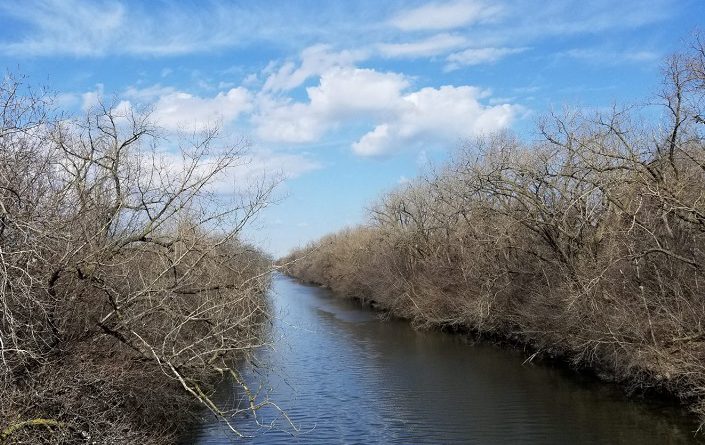May 6, 2018 – Chicago Grows Green Lawns and Rivers
It’s that time of year–when you’re going to get pitched on lawn care products.
![]() All you have to do is have the television or radio turned on to see/hear the countless ads that warn you that weeds are out to invade your lawn and, worse, to prove that you’re not cool. Of course, the answer to all of your problems is to purchase whatever product is being hawked–usually Roundup or “weed n’ feed”–and, magically, your life will be filled with sunshine, rainbows and unicorns…provided they don’t step in the stuff that you’ve slathered on your property.
All you have to do is have the television or radio turned on to see/hear the countless ads that warn you that weeds are out to invade your lawn and, worse, to prove that you’re not cool. Of course, the answer to all of your problems is to purchase whatever product is being hawked–usually Roundup or “weed n’ feed”–and, magically, your life will be filled with sunshine, rainbows and unicorns…provided they don’t step in the stuff that you’ve slathered on your property.
Some of these products are fertilizers and some are pesticides and some are combinations of the two, often cheerily referred to as “weed n’ feed”. As I often tell wide-eyed folks at garden talks, the reason these products are known as “weed n’ feed” is because nobody would buy them if they were called “poison n’ synthetic fertility,” though that would be truth in advertising.
Some companies like the idea of what they call “four step” programs, where they tempt you to buy weed n’ feed and other nitrogen and phosphorus-rich products that mainly end up in our waterways and create dead zones in the Gulf of Mexico and toxic algae blooms in the Great Lakes. A few years ago, my horticulturist friend Dan Kosta and some of his buddies came up with how these programs really work. I use this all the time, mainly because I find it funny. So humor me:
- Step 1: Apply lawn fertilizer with too much nitrogen, weakening your lawn to insects and diseases.
- Step 2: Apply insect and disease control to cure the problems created by over fertilization.
- Step 3: Plant grass seed to repair the damage caused by Steps 1 and 2.
- Step 4: Return to Step 1.
 There are other disadvantages to obsession with your lawn. The photo on the right, for instance. And let’s clear up some terminology right now. When I write the word “pesticide,” I’m referring to a number of different substances. The U.S. EPA (you know, the old one, before it was the subject of a hostile takeover by you-know-who) lists no fewer than nine types of pesticides:
There are other disadvantages to obsession with your lawn. The photo on the right, for instance. And let’s clear up some terminology right now. When I write the word “pesticide,” I’m referring to a number of different substances. The U.S. EPA (you know, the old one, before it was the subject of a hostile takeover by you-know-who) lists no fewer than nine types of pesticides:
- Algaecides to kill and/or slowing the growth of algae.
- Antimicrobials to control germs and microbes such as bacteria and viruses.
- Disinfectants to control germs and microbes such as bacteria and viruses.
- Fungicides to control fungal problems like molds, mildew, and rust.
- Herbicides to kill or inhibit the growth of unwanted plants, also known as weeds.
- Insecticides to control insects.
- Insect Growth Regulators to disrupt the growth and reproduction of insects.
- Rodenticides to kill rodents like mice, rats, and gophers.
- Wood Preservatives to make wood resistant to insects, fungus and other pests.
Fun, huh?
Which brings us to our friends at the Midwest Pesticide Action Center (MPAC). They’re a group that works at the local, state, and regional levels to protect people and the environment from the dangers of pesticides through advocacy, education, and outreach. They note that “about 5.2 billion pounds of pesticides are used worldwide each year, with 1.1 billion pounds used in the United States.”
 And if you watch TV or listen to radio at all, you know that a lot of that stuff is used to wipe out dandelions. Why we’re so angry with dandelions has never quite been answered to my satisfaction, but let’s move on. What you might not realize is that there are a lot of different chemicals that we use to kill weeds in our lawns. According to Beyond Pesticides, it ain’t pretty:
And if you watch TV or listen to radio at all, you know that a lot of that stuff is used to wipe out dandelions. Why we’re so angry with dandelions has never quite been answered to my satisfaction, but let’s move on. What you might not realize is that there are a lot of different chemicals that we use to kill weeds in our lawns. According to Beyond Pesticides, it ain’t pretty:
Of 30 commonly used lawn pesticides, 16 are linked with cancer or carcinogenicity, 12 are linked with birth defects, 21 with reproductive effects, 25 with liver or kidney damage, 14 with neurotoxicity, and 17 with disruption of the endocrine (hormonal) system.
Of those same 30 lawn pesticides, 19 are detected in groundwater, 20 have the ability to leach into drinking water sources, 30 are toxic to fish and other aquatic organisms vital to our ecosystem, 29 are toxic to bees, 14 are toxic to mammals, and 22 are toxic to birds.
I’ve been talking about this stuff for a long time, but let’s cut to the chase. MPAC has put together a series of events under the title Chicago Grows Green Week, where they will educate the public about pesticides and their use. They are working with the Metropolitan Water Reclamation District of Greater Chicago (MWRD), the UIC Freshwater Lab, the Naperville Park District, Riverdale Park District, Chicago Park District and other groups, starting with a kickoff at Riverdale Park District’s Ivanhoe Fieldhouse on Friday, May11.
While Friday focuses mostly on the problem of lawn and garden pesticide and fertilizer use, the rest of the week stresses and demonstrates the solutions. In Chicago’s neighborhoods of Pullman (May 12th) and Veteran’s Park (May 15th), CGG Week partners will share organic gardening tips and practices to residents through games and activities. In Naperville, residents will show their appreciation for the NPD’s new pesticide-free park program by volunteering to hand pull dandelions on May 17th. Finally on Saturday, May 19th, citizen action groups of the Deep Roots Project, Go Green Brookfield, and more gather to share their natural lawn care and sustainable landscaping successes and progress at Dig Right In Landscaping, Inc’s warehouse, 9900 Derby Lane, Westchester, for the CGG Week Celebration and Compost Tea Sale.
MPAC Executive Director Ruth Kerzee joins us this morning to talk about the coming event. You can learn more about growing what some folks call a “natural” lawn and others call an “organic” lawn (I’m not going to get into the difference right now) at MPAC’s Midwest Grows Green page. Here are some other sites that you might find useful:
National Coalition for Pesticide Free Lawns
Believe it or not, there are real environmental success stories in Chicago.
One of them is the Chicago River. Had this been ten or twenty years ago, this is the place where you would insert the punch line. But, remarkably, the Chicago River is witnessing a kind of renaissance. To wit,
– In the summer of 2015, the Illinois Pollution Control Board (IPCB) accepted updated water quality standards for the Chicago River, guaranteeing a healthy water environment for people, plants, and animals. In 2016, disinfection technology at the O’Brien and Calumet Water Reclamation Plants began eliminating harmful bacteria from river effluent.
– The 2018 Chicago River Summit was held in March of this year, with the goal of bringing a global focus on how to remove trash and prevent it from entering our waterways.
– As reported on The Mike Nowak Show on Earth Day 2018, a coalition of groups and businesses unveiled a plan to remake the North Branch Industrial Corridor, opening for the first time a section of the Chicago River that had been at the mercy of heavy industry for decades. The area, now called the North Branch Park & Nature Preserve would feature a 24-acre park on the banks of the river.
Not surprisingly, the organization that finds itself in the middle of these positive changes is Friends of the Chicago River, which has been looking out for the much-maligned body of water since 1979. Just one of the ways that Friends makes a difference is through its annual Chicago River Day, which began as “Chicago River Rescue Day” in 1992>
That day, Friends hosted a small, feisty group of 25 dedicated volunteers who wanted to rescue the river by pulling shopping carts, mattresses, and plastic bags from its banks. Twenty-five years and more than 60,000 volunteers later, the Chicago River system is no longer a forgotten wildlife corridor filled with sewage and trash. Today the river system is vibrant, accessible, and alive with people, 70 species of fish, countless species of birds, and many native animals including beavers, mink, and turtles.
I’ll bet you didn’t even know that the Chicago River is 156 miles long! Amaze your friends during your next drinking game.
John Quail, Director of Watershed Planning for Friends of the Chicago River stops by the 1590 WCGO studios this morning to talk about all of the above and more, such as wildlife along the river (including the famous “fish hotel“), Chicago River Blue Awards, and the Big Fish Ball on June 5.


